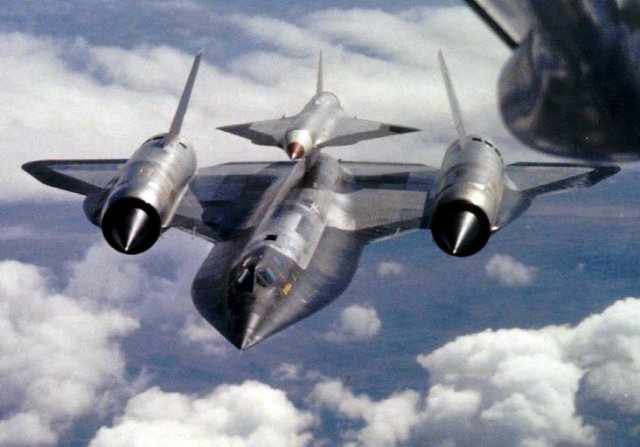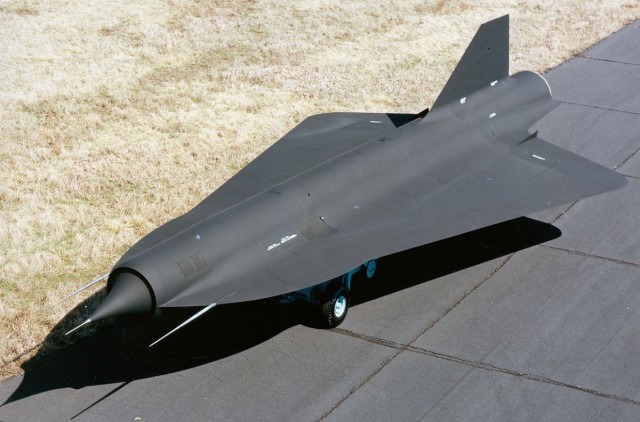 In the late 1960s and early ’70s, the CIA embarked on a programme to build an unmanned version of America’s most iconic spy plane—one that could reach deep into the heart of Chinese territory to pry out the nuclear secrets at supersonic speeds and at little risk to human pilots.
In the late 1960s and early ’70s, the CIA embarked on a programme to build an unmanned version of America’s most iconic spy plane—one that could reach deep into the heart of Chinese territory to pry out the nuclear secrets at supersonic speeds and at little risk to human pilots.
American intelligence agencies were desperate to get a glimpse of the parched deserts of Lop Nor, home to China’s growing nuclear and missile programs. Getting intelligence on the Soviet Union and China’s military capabilities and was no easy task in the early Cold War period. Both were closed societies with air defenses that posed a serious risk to any planes crossing into their air space.
But the pressure to deliver intelligence at a time when heightened tension with America’s communist rivals could easily have led to war prompted the intelligence community to develop a raft of reconnaissance systems in the 1950s and ’60s that could collect intelligence over denied areas.
In the late 1950s, the CIA had begun work on one of those systems. The A-12 Oxcart is the lesser-known forerunner of its more famous Air Force cousin, the SR-71 Blackbird. With a supersonic ramjet engine and a 95,000-foot maximum altitude, the A-12 would hopefully be impervious to enemy air defenses.
But as a companion to the Oxcart program, the CIA also commissioned Lockheed Martin in 1962 to make a supersonic drone in a program called Tagboard.
Enter the D-21. The drone looked like a wing carved off the body of an A-12 and was supposed to work as a more or less a stripped-down, unmanned version of its manned cousin.
Lockheed converted two A-12 aircraft, renamed M-21, into motherships, adding a second seat for a launch control officer and modifying the aircraft to carry the drone on its back up to a launch point.
In order for the D-21 to begin its mission, the M-21 would have to accelerate up to Mach-3.3, at which point the drone’s engine would kick in and the aircraft would separate.
Powered by a Marquardt XRJ43-MA20S-4 ramjet engine, flying as high as 95,000 feet and with a small radar cross section, the drone would theoretically could theoretically fly with impunity as it flew a preprogrammed route over its target and took pictures.
Recovering those pictures — still on old-school film in the days before digital photography—would prove tricky. The D-21 was supposed to eject its camera and film via a parachute that a modified C-130 transport would then intercept. What was left of the drone would later self-destruct after jettisoning the payload.
But shortly after testing had begun on the Tagboard drone, the program suffered a tragic accident. During a test launch flight on July 30, 1966, the D-21 drone flying atop M-21 number 135 lost power in its engine, causing it to crash into the mothership.
The plane went down, killing launch control officer Ray Torick.
The Tagboard program thus switched to a B-52H as the delivery vehicle for the supersonic drones. The change in launch aircraft meant that engineers had to convert the remaining 15 D-21 drones—plus a fortchoming batch of news ones—to fit the new mothership and also give them rocket boosters to reach Mach 3.3, at which point their ramjet engines would kick in.
The B-52H configuration proved successful. Now Washington had to decide whether and where to actually deploy the drones.
Some observers doubted that sending Tagboard over defended areas was as risk-free as it sounded. Albert Wheelon, CIA’s the Deputy Director for Science and Technology, was a legend at the Agency for his work on reconnaissance systems. Though the CIA had transferred the Tagboard program to the National Reconnaissance Office, Wheelon expressed some of the common apprehensions about drone overflights in a September 1966 memo.
“It is felt that their loss is not so painful as a live, testifying pilot,” he wrote. “What would be the political impact of a Tagboard drone down in the USSR or China or Cuba?” Wheelon wondered. “I come to believe that we rely on a weak reed if we take the drone narcotic too often.”
Wheelon’s hesitance was by no means universal. Three years later, authorities tasked the D-21B with gathering intelligence on China’s arsenal of nuclear weapons and missiles at its test facilities deep inside Chinese territory at Lop Nor.
The missions, codenamed Senior Bowl, were ultimately a failure. The drone made only four flights, one in 1968, another in 1970 and two in March of 1971.
Its first mission failed because “computational errors” in its guidance system directed the aircraft away from the recovery point. The next two lost their film and camera payloads over the ocean on the return journey and the Tagboard drone on the final mission never made it back to a rendez-vous point.
Following the failed missions over China, the NRO launched an investigation into the causes of the D-21B’s problems and concluded that it would take months to fix. The Executive Committee of the National Reconnaissance Program recommended cancelling the program.
A handful of factors had led to the D-2’s demise. First, the technical problems, poor performance and crashes didn’t exactly instill confidence in the drone’s ability to perform its intended missions.
Second, by the early 1970s the administration of Pres. Richard Nixon had begun engaging China’s leadership in an attempt to rebuild relations with the PRC and drive a wedge further into the Sino-Soviet split.
White House staff had been worried early in the Nixon administration that any flights over Chinese territory—D-21 or otherwise—could prove needlessly provocative and the needs of strategic diplomacy eventually outweighed those of reconnaissance.
Finally, the improvement in spy satellite technology increasingly made the niche reconnaissance capability offered by the D-21 unnecessary. Corona satellite imagery had already been squeezing out the need for the A-12 in the late 1960s.
By the early 1970s, the launch of the KH-9 Hexagon satellite offered improved resolution to the earlier Corona series of spy satellites and made the technical and political risks entailed by D-21 overflights increasingly unnecessary.
Ultimately, the Wheelon’s concerns would prove only somewhat prescient. A Tagboard drone did crash in China. The Chinese Aviation Museum has the wreckage of a D-21B on display even today.
But the Tagboard and other drone overflights didn’t prove provocative enough, or perhaps not numerous enough, to scuttle the warming ties between the U.S. and China.
Top Photo—a D-21 attached to an M-21 mothership. Air Force photo. Centre Photo— a retired D-21 sits on a runway. National Museum of the U.S. Air Force photo
Source: War is Boring

